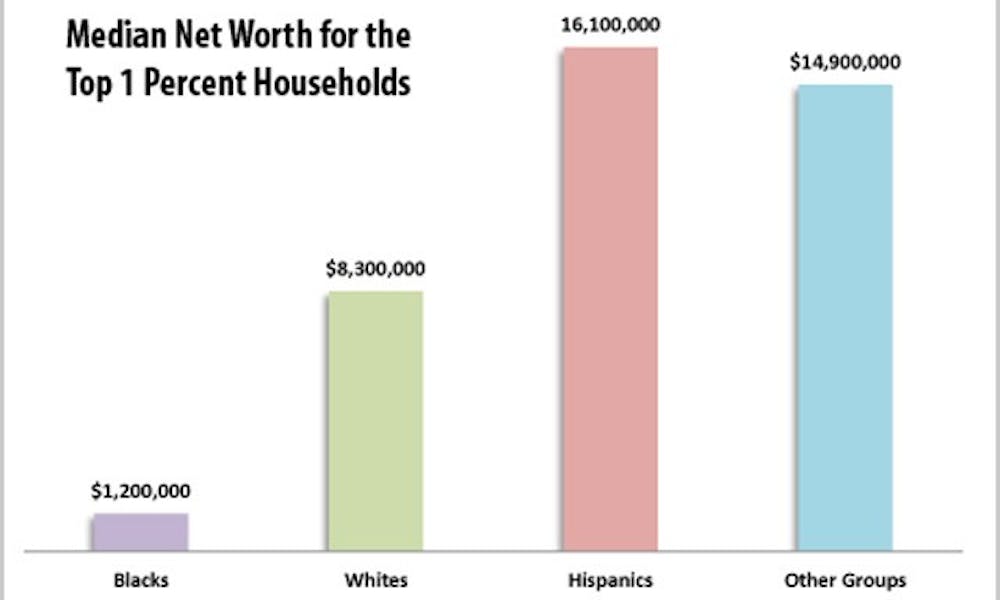The racial makeup of the top earners in American society is very lopsided, according to federal income data.
African Americans only make up 1.4 percent of the top 1 percent of American households by income and Hispanics and other minority groups make up .9 percent and 1.6 percent respectively, according to the Grio, an African American news website. In terms of actual wealth held by the top 1 percent, whites hold almost seven times more wealth than African Americans. The Grio calculated this from data based on the Federal Reserve’s 2007 Survey on Consumer Finances.
One of the biggest factors related to this wealth gap, according to the Grio, is the higher level of household debt—$1.4 million on average—that African Americans in the top one percent accumulate. Despite this disparity, some contend that debt is not the main cause that inhibits wealth accumulation by African Americans.
“The major sources of wealth for most of the super rich are inheritances and in life transfers”, William Darity, professor of African American Studies and economics at Duke, wrote in an email Monday. “The big reason is racial differences in access to resources to transfer to the next generation.”
Darity added that the practices of enslavement, violence, Jim Crow, discrimination and dispossession of property have kept generations of African Americans from accruing the type of wealth that whites in the top 1 percent have today.
But the government needs to help in creating a wealth cycle for African Americans and any low-wealth Americans is imperative, Darity added. He proposes that the government provide bonds ranging in value from $20,000 to $30,000 to infants born into low-wealth families. When they reach adulthood, those individuals can then tap into these bonds, thus creating an inheritance for these children.
The Baby Bonds proposal would only cost about $60 billion annually, a drop in the bucket compared to the total national debt, Darity said.
“I think that’s a great idea,” said Robert Korstad, professor of public policy. “When we think of the wealth in the top 1% a lot of that money is generations old and African Americans have been excluded from it due to the legacy of discrimination and segregation.”
Sophomore Jacob Tobia, a member of Occupy Duke, wrote in an email that the Occupy movement fundamentally aims to address disparities in income by race.
“We certainly are concerned by the fact that only 1.4 percent of the top 1 percent of households by income are African-American households,” said Jacob Tobia, a member of Occupy Duke. “Occupy Duke stands against arbitrary systems of privilege and the ways that they disproportionately benefit the few at the expense of the many,”
Despite their under-representation among the one percent, African Americans have not joined the Occupy movement, according to data compiled Fast Company. They make up 1.6 percent of the approximately 5,000 protestors surveyed at the movement’s epicenter in New York.
Although black participation in the Occupy movement may appear limited, African Americans have joined the locals movements in predominantly black communities, Wahneema Lubiano, professor of African and African American Studies, wrote in an email Wednesday.
Get The Chronicle straight to your inbox
Signup for our weekly newsletter. Cancel at any time.

